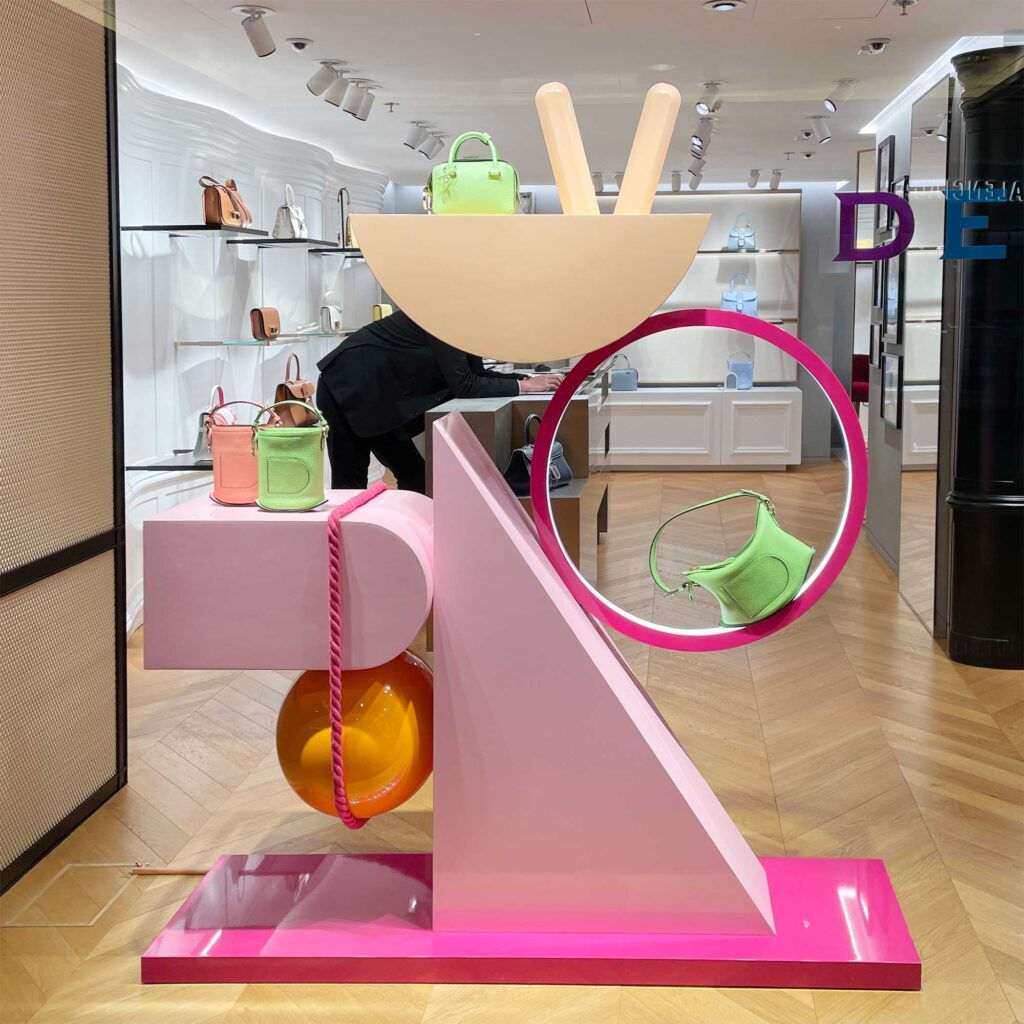What Makes a Display Truly Sustainable?

Going Beyond Buzzwords: How Samtop Builds Displays That Respect the Planet and the Brand
Table of Contents
True sustainable retail display practice goes beyond buzzwords, means more than using FSC-certified wood or avoiding plastic. At Samtop, it means designing for reuse, selecting low-impact materials, enabling repairs, optimizing freight, and closing the loop post-campaign. This article outlines our full sustainability framework — from concept to reuse.

“Sustainability” has become a buzzword — but most retail displays are still designed for single use, packed inefficiently, and made with unsustainable materials.
The result? High carbon footprint, tons of waste, poor lifecycle ROI, and missed ESG goals.
At Samtop, we engineer every display system with sustainability built-in — from modularity and materials to packaging and end-of-life use. We don’t just reduce waste — we build smarter displays.
♻️ 6 Ways to Build Sustainable Retail Displays That Last
✅ 1. Designed for Reuse, Not Single Use
The most eco-friendly retail display is one you don’t have to throw away. We help brands:
- Build modular structures with removable branding
- Use seasonal overlays instead of full rebuilds
- Integrate magnetic/slot-in signage
- Choose durable finishes that extend lifespan
📦 Example: A glorifier reused across 3 fragrance launches just by swapping inserts — no retooling needed.
✅ 2. Sustainable Materials with Certifications
| Material | Sustainable Action |
|---|---|
| MDF / Wood | FSC®-certified, formaldehyde-free |
| Acrylic | Recycled PMMA or optimized thickness to cut waste |
| Metal | Highly recyclable aluminum, rust-resistant coatings |
| Resin / PU Foam | Low-VOC coatings, lightweight for reduced emissions |
| Packaging | Corrugated FSC carton, water-based print, reusable foam |
🔍 Certifications Provided: FSC, SA8000, ISO 14001, REACH, RoHS
✅ 3. Flat-Pack Shipping = Lower CO₂
- Foldable or snap-in structures
- Reduced packaging size
- Stackable designs for freight
- Regional packaging for drop ship
🌍 Result: 40% lower shipping footprint compared to standard solutions.
✅ 4. Low-VOC, Brand-Safe Finishes
| Element | Sustainable Option |
|---|---|
| Paint | Water-based, 2K low-VOC systems |
| Adhesives | Non-toxic, high-strength bonding |
| Printing | UV or soy-based inks |
| Odor | Verified via export testing |
✔️ All materials pass EN71 / CA Prop 65 when required.
✅ 5. Repairable, Replaceable, and Circular
Instead of scrapping a damaged unit, we help you:
- Swap trays, risers, or graphics
- Reuse base structures across seasons
- Repack for future campaign use
🧰 We offer repair kits, backup parts, modular guides for store teams.
✅ 6. End-of-Life Planning
We advise brands to:
- Disassemble for material sorting
- Recycle metal, acrylic, cardboard separately
- Store displays for future reuse
- Upcycle or donate for CSR value
📈 Real Case: 90-Store Sustainable Rollout
Client: Clean beauty brand (EMEA + APAC)
Brief: Fully sustainable tester for 3 campaigns
Samtop Approach:
- PU-wrapped FSC MDF structure
- Recycled acrylic, CNC-cut
- Magnetic signage system
- Flat-pack carton with foam inserts
- Water-based paint only
- Modular for seasonal reuse
✅ Used for 3 seasons
✅ 38% reduction in freight cost
✅ Passed internal Eco VM Audit
✅ Only headers reprinted per season
👥 Who Should Read This?
- ✅ Brand visual merchandisers focused on ESG
- ✅ Agencies designing sustainable retail programs
- ✅ Procurement teams reducing waste
- ✅ Retail heads aiming for real sustainability — not greenwashing
- ✅ Global rollout leads optimizing for logistics + carbon
🎯 Conclusion: Real Sustainability Is Engineered
At Samtop, we don’t make “green-looking” displays. We engineer systems that:
- ✔️ Reduce carbon & material waste
- ✔️ Extend display lifespan
- ✔️ Simplify reuse and repairs
- ✔️ Align with your brand’s sustainability goals
📧 Email: yan@samtop.com
🌍 Website: www.samtop.com
Samtop Display — Engineered to Impress. Built sustainable VM to Last. Designed to Care.
❓ FAQ: Sustainable Retail Displays
1. What makes a retail display truly sustainable?
A truly sustainable display prioritizes reuse, low-impact materials, modular design, flat-pack shipping, repairability, and end-of-life planning — not just recycled content.
2. Can modular displays be reused across different campaigns?
Yes. Modular displays with interchangeable signage and removable inserts allow brands to update visuals seasonally without rebuilding the base.
3. What materials are considered eco-friendly for retail displays?
FSC-certified MDF, recycled PMMA acrylic, recyclable aluminum, water-based finishes, and low-VOC adhesives are all eco-preferred materials used by Samtop
4. How does flat-pack shipping reduce a display’s carbon footprint?
Flat-pack displays minimize freight volume and weight, leading to up to 40% lower CO₂ emissions compared to fully assembled units.
5. What certifications should sustainable displays meet?
Look for FSC®, REACH, RoHS, SA8000, ISO 14001, and Prop 65 compliance — these validate responsible material sourcing and safe production
6. Can damaged retail displays be repaired instead of replaced?
Yes. Samtop offers modular systems with spare parts, magnetic components, and user guides to easily replace damaged sections without full rebuilds.
7. What is end-of-life planning in display design?
End-of-life planning includes strategies for disassembly, recycling, reuse, donation, or upcycling — minimizing landfill waste and supporting CSR goals.